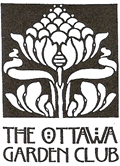Spring has sprung/The grass is riz/I wonder where the birdies is?/Some say the bird is on the wing/But, my word, that's absurd!/From what I’ve heard/The wing is on the bird!
Every spring, this little children's rhyme springs into my mind. Silly, no question, but it evokes childhood memories of the first visitors to appear overhead and in the garden. That would be birds, of course.
Everything from the chatty robins, who arrive worrisomely early each year when snow and freezing temperatures still linger, to the buzzing, erratic flight of the tiniest Hummingbird; from the Baltimore Orioles with their brilliant orange plumage to our favourite Cardinals, which now overwinter in large numbers; from the jittery movements of the tiny spring migrants to massive Bald Eagles (I include them here as, much to my surprise, one flew over my head as I stood in my front yard about two weeks ago, white head and white tail in full view as it soared to the tops of the tall trees around us, and then gently sailed off towards the river and Gatineau, leaving the crows to calm down as they watched him leave ... what a sight!). All of these avian friends are either ready to nest here or to just pass through on their way to plentiful feeding grounds to the north. They sometimes need a little help to get through the often chilly spring when worms or plentiful nectar are not easy to find.
Water and cover for birds in Clematis vine, Tree Peony, and Boxwood. Photo: Mary Pratte
Young birds, such as this juvenile Baltimore Oriole, sometimes need our help to find some extra food in the spring, and it is good to use decals on windows to prevent them from flying into the glass. Photo: Mary Pratte
A rare sight in our neighbourhood, but a glorious one. A mature male Bald Eagle, with unmistakable white head and white tail, flew over our yard a couple of weeks ago. Apparently they are more frequent than before around here, so maybe we will have a nesting pair one day soon! They will mainly fish for their food, so no attacks on your bird feeders as there are by smaller hawks in the area.
You can help.
Think throughout the summer about which food is available to those early arrivals in your garden and try to add some plantings to your space: Think about fruit trees, nut trees, some crabapples which hold their fruit until spring, some of the Euonymous varieties (burning bush); very early ephemeral flowers such as the winter aconites, snowdrops, corydalis, crocus which flying insects love, and which are, in turn, loved by birds; bird feeders with nuts and/or suet; water and cover (evergreen bushes, for example); and finally, some leaf litter so that insects hiding there can easily be found by the birds...they don't like it as tidy as we do...
Pileated Woodpecker at suet feeder this spring. At almost 20” head to tail, and a wingspan of almost 30”, they are impressive birds. They eat insects mainly found in rotting trees, so if you are able to leave some old trees on your property, that will assure that you will see them from time to time. Of course, don’t leave rotted trees standing if they will cause damage. Contrary to popular belief, they do not kill the trees they feed off of — they only go to trees which are already suffering from insect infestation. Their diet also consists of fruits and berries. These birds are less rare than before in our area and many overwinter here or a bit further south. Photo: Mary Pratte
In passing, do you know how many bugs a bird eats in a day? I looked it up and it is hundreds, so multiply that by the number of days they are here, and that takes care of an awful lot of creepy crawlies out there! One site said one bird would eat 1 million in a year...hard to believe, but if it's right, that's impressive!
As I write this, I hear a song sparrow, robins, cardinals, a blue jay, a phoebe, chickadees, and, from time to time, the scary repetitive call of a hawk about to pounce. (Remember to provide cover near a feeder so the raptors don't have a clear path to scooping up the little birds) And those are just the birds I can identify by their song.
Oh, and Canada geese...lots of them flying over at this time of year. At night, even, as many birds migrate on a clear, moonlit night. Go out after dark and listen. It is quietly comforting to hear them up there. But migratory birds fly into windows - day or night - be it at a small bungalow or tall skyscraper. And not just a few, but hundreds of thousands every year. Please turn off very bright lights during migration, put some sort of decals up on your windows (very good ones at Wild Birds Unlimited) ...and all of our tall office buildings should do the same.
Any water will do for birds, even a pool covering in early spring! And note the places for small birds to hide should a predator come along.
Seeds from the burning bush (Euonymus alata) at our place. Not their favourite food, they will strip fruit from neighbouring crabapples before coming to us, but seeing the red Cardinals sitting surrounded by berries while the snow is falling is a real delight! Photo: Mary Pratte
So set out that birdbath, fill that clean bird feeder with appropriate bird food, sit down with your cup of tea, and enjoy the endless birdsong of our early spring! You and I can keep them coming back by choosing our plants well and by protecting them from the many dangers which await them on their long journeys.
And do take a few minutes to open and read these two links...
https://abcbirds.org/blog/truth-about-birds-and-glass-collisions
https://www.allaboutbirds.org/news/the-best-plants-and-trees-to-plant-for-birds-a-starter-list/






